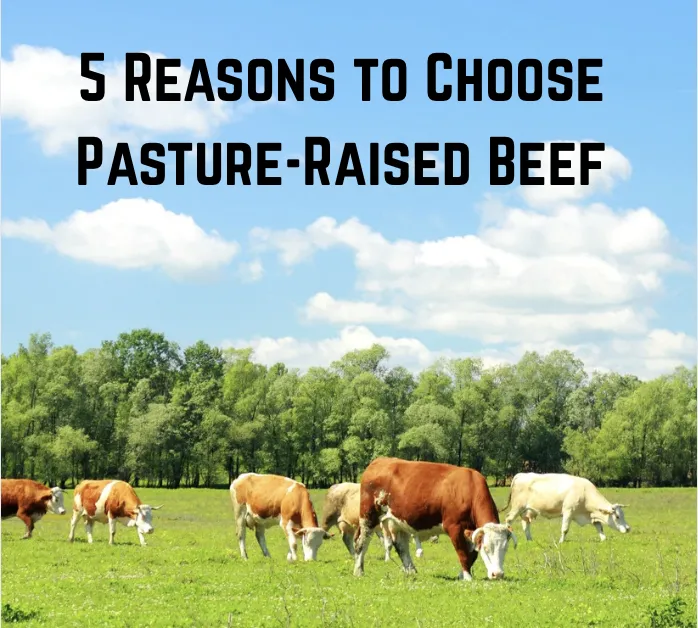
5 Reasons to Choose Pasture-Raised Beef
Not all beef is created equal. At Windmill Harvest, we believe in raising food the way nature intended — on open pastures, under open skies, with no shortcuts.
In this post, we’ll explore why pasture-raised beef isn’t just better for the cow — it’s better for you, your family, and the planet.
5 Reasons to Choose Pasture-Raised Beef
1. It’s More Nutritious
Pasture-raised beef is naturally richer in key nutrients than grain-fed beef. It contains:
Higher levels of omega-3 fatty acids
More conjugated linoleic acid (CLA) (linked to reduced risk of cancer and heart disease)
Increased vitamins A & E, plus antioxidants
Your body knows the difference — and so will your taste buds.
2. No Mystery Feed, No Antibiotics
Our cows graze on grass and clover, not corn or grain laced with fillers. They roam freely, don’t need routine antibiotics, and are never fed growth hormones. It’s meat the way it was meant to be.
3. Better for the Earth
Rotational grazing helps regenerate the soil, reduce erosion, and naturally fertilize the land. Pasture-raised beef supports sustainable agriculture — and helps protect the future of farming.
4. You Can Taste the Difference
You may notice a richer, cleaner flavor with pasture-raised beef — because it comes from healthier animals on healthier land. It’s the kind of taste you just can’t fake in a feedlot.
5. You Know Where It Comes From
Our beef comes from Amish and neighboring farms near Old Windmill Farm, raised by families who’ve been farming for generations. It’s processed at USDA-approved local facilities, ensuring the highest standards of quality and safety.
Ready to Taste the Difference?
We offer a variety of pasture-raised cuts, including ground beef, brisket, patties, and more — all available for pickup at the farm. Place your order at windmillharvest.com, and enjoy local, nutrient-rich food your family can trust.
Sources for further reading:
Daley, C. A., Abbott, A., Doyle, P. S., Nader, G. A., & Larson, S. (2010). A review of fatty acid profiles and antioxidant content in grass-fed and grain-fed beef. Nutrition Journal, 9(1), 10.
Teague, W. R., et al. (2016). The role of ruminants in reducing agriculture's carbon footprint in North America. Journal of Soil and Water Conservation, 71(2), 156–164.